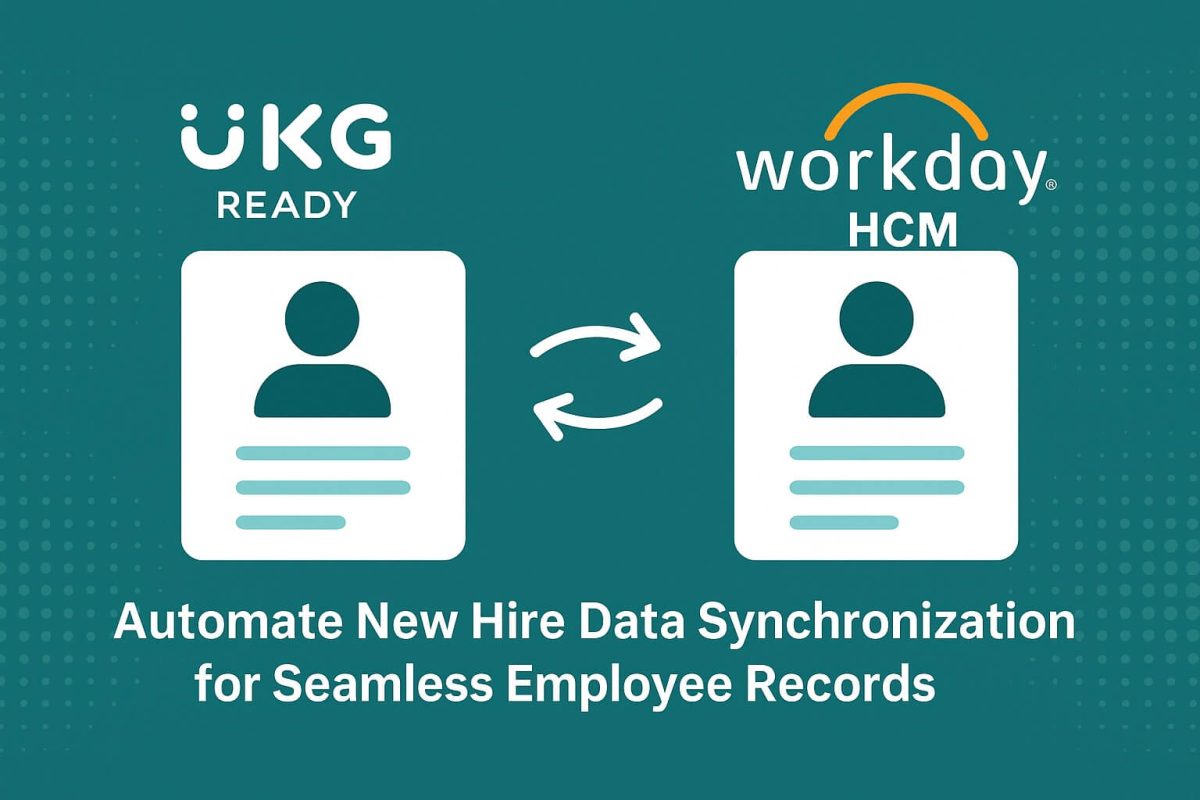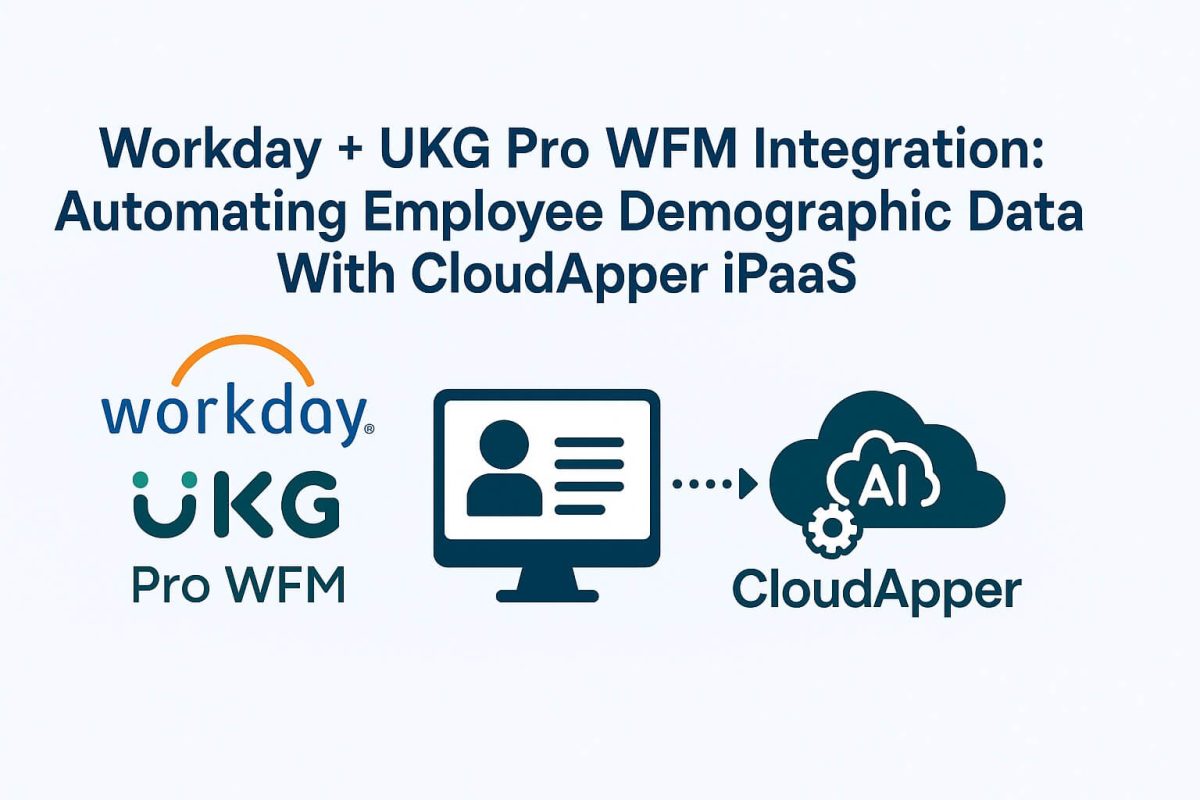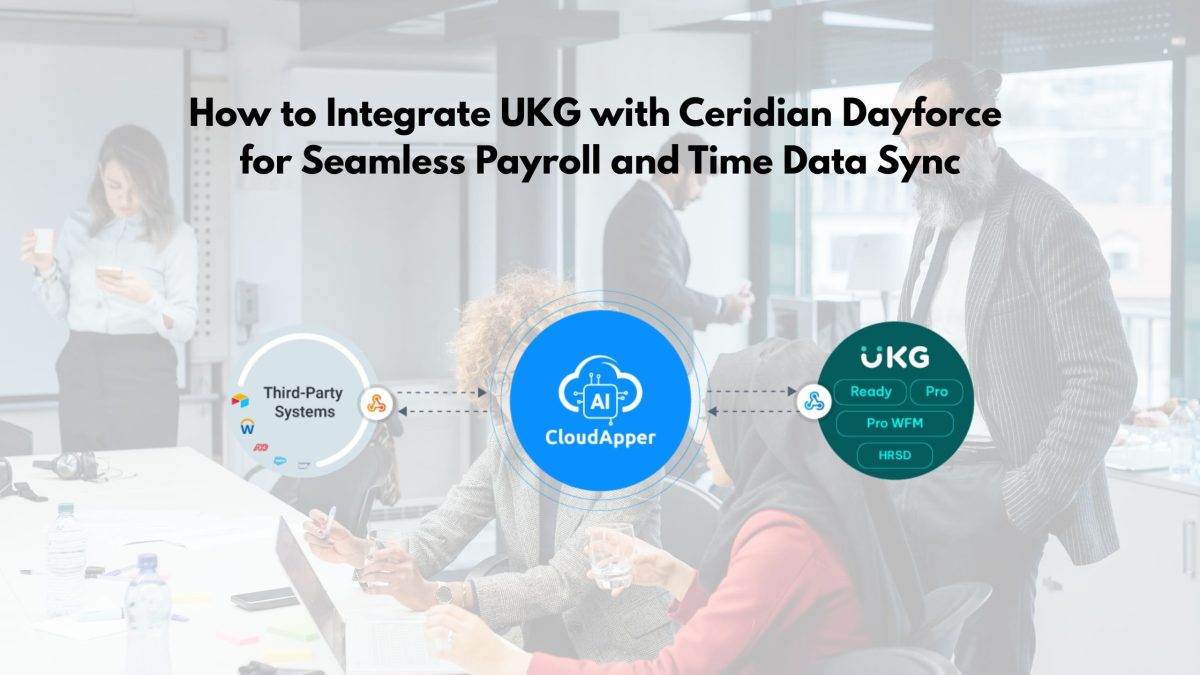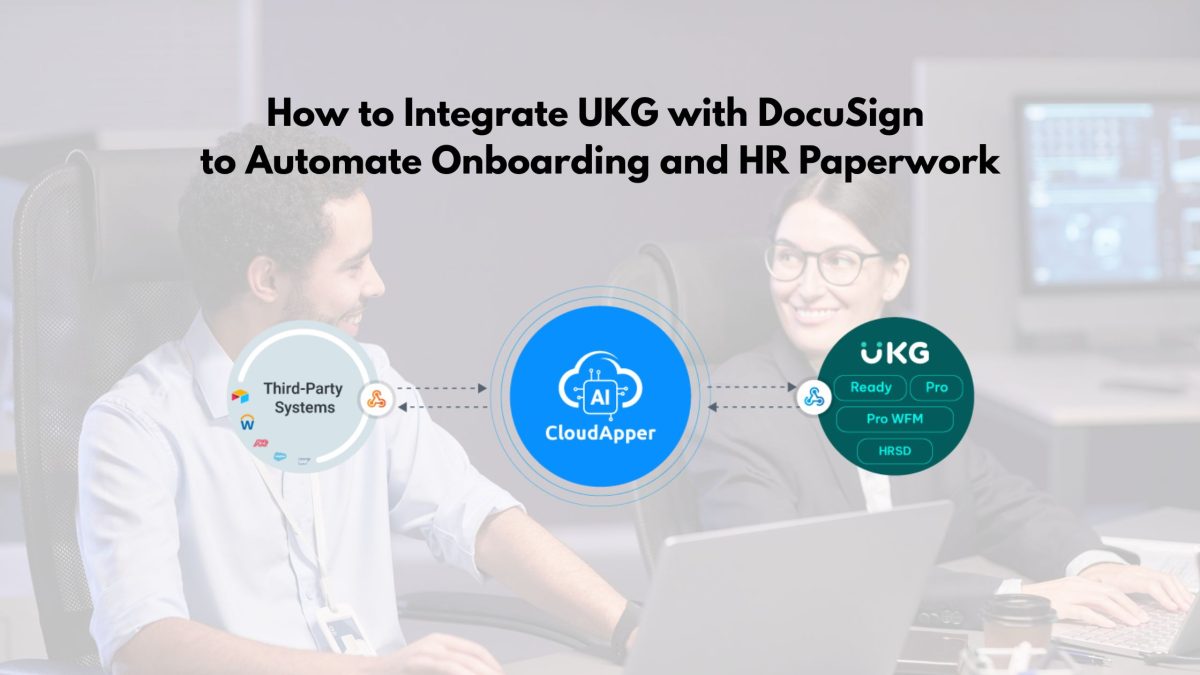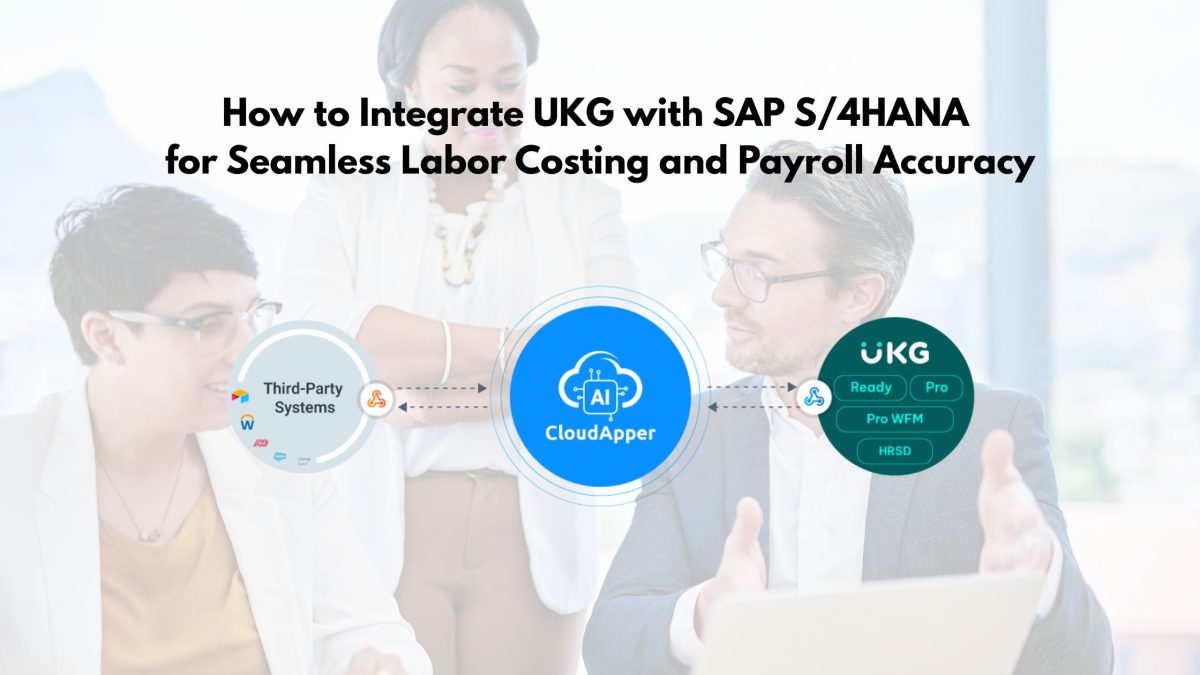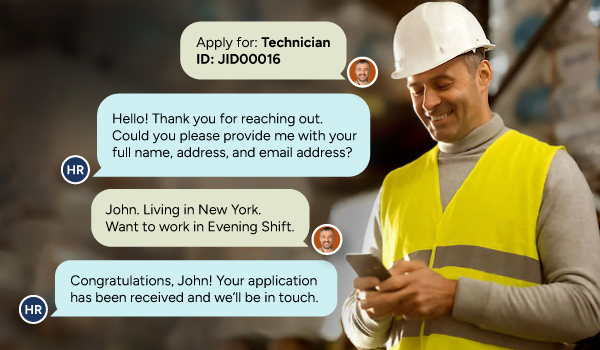Automating new hire data sync between UKG Ready and Workday HCM transforms HR efficiency by reducing errors, enhancing compliance, and improving employee satisfaction. This integration slashes administrative overhead, boosts accuracy, and supports seamless onboarding.
Table of Contents
HR leaders often tell me that manual data entry slows everything down—and the mistakes it creates can cost companies thousands of dollars each year. From my 15+ years working with HCM integrations, I’ve seen how disconnected HR systems make life harder for payroll teams, managers, and employees alike. That’s why connecting platforms like UKG Ready and Workday HCM is so powerful. It’s not just about linking two systems—it’s about making sure employee data flows smoothly, reducing errors, staying compliant, and keeping the workforce happy.
In this article, I’ll break down the real benefits of UKG Ready and Workday HCM integration, walk you through how to automate new hire data synchronization, and share best practices for keeping UKG Ready–Workday data in sync. I’ll also show how CloudApper UKG Sync, a no-code integration tool, makes it simple for organizations to achieve all this without heavy IT involvement.
For more information on UKG Sync By CloudApper visit our page here.
What Are the Key UKG Ready and Workday HCM Integration Benefits?
In today’s workplace, where hybrid schedules are common and employees often move between roles and locations, the UKG Ready and Workday HCM integration benefits are too important to ignore. UKG Ready is well known for managing scheduling, time tracking, and payroll, while Workday HCM focuses on talent management, benefits, and workforce analytics. When these two platforms work together, they create a single connected system that keeps employee data accurate and up to date—especially for new hires. From my experience helping large enterprises, this type of integration can reduce manual HR tasks by more than half, giving teams more time to focus on improving employee engagement and retention.
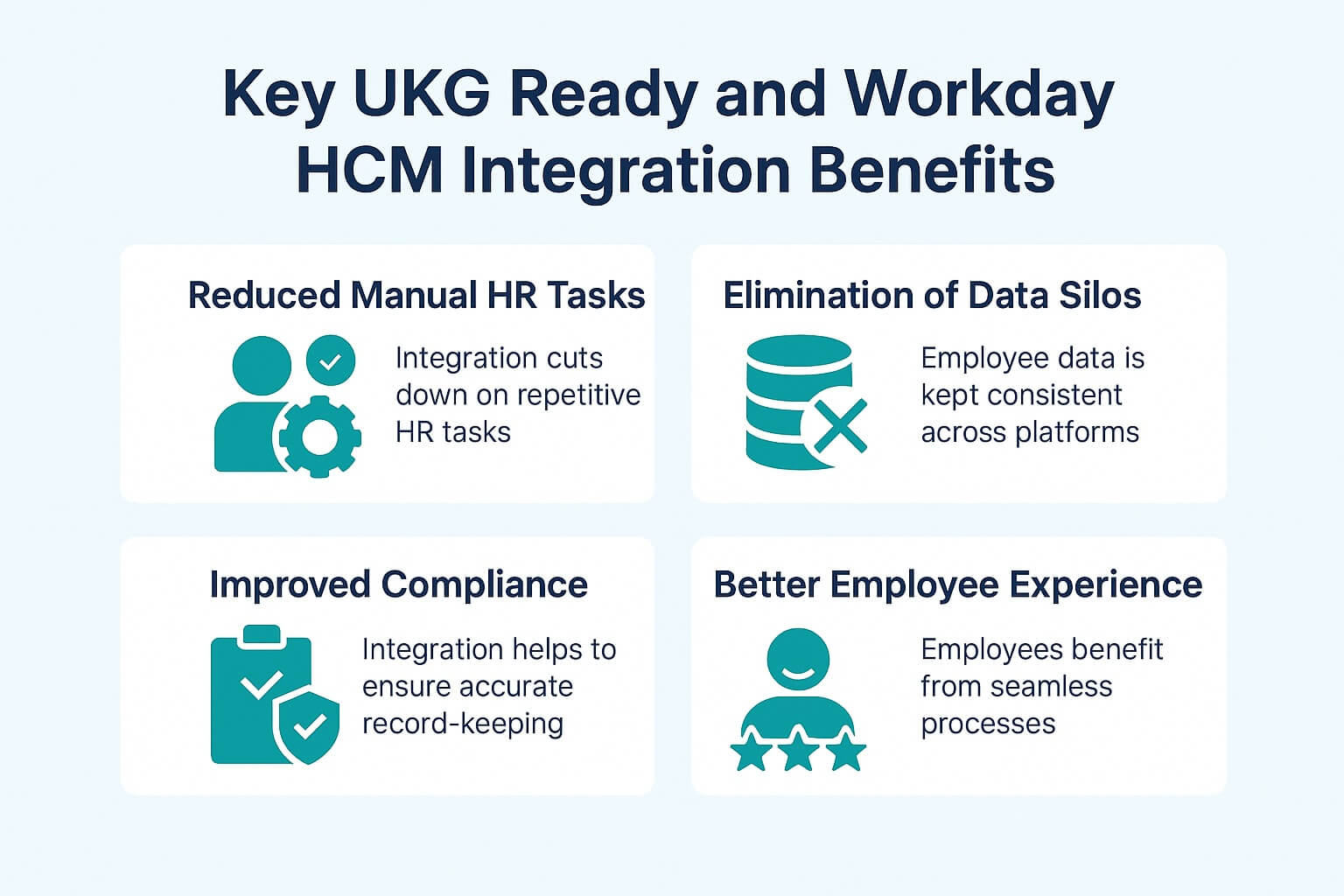
One of the biggest advantages of UKG Ready and Workday HCM integration is removing data silos. For example, when a new hire’s details—such as job role, salary, or benefits—are entered in UKG Ready, integration ensures that the same information is instantly available in Workday HCM. Without this connection, HR teams are forced to copy information manually, which often leads to errors and delays. I’ve seen cases where payroll mistakes affected hundreds of employees every month. After integration, accuracy levels improved dramatically, boosting employee trust and even lowering turnover.
Compliance is another key benefit. With strict labor laws and data protection regulations, companies need systems that can provide complete and accurate records. Integrated HR platforms create a reliable data trail that is ready for audits at any time. This protects organizations from fines and ensures HR teams can focus on higher-value work. Another strength is scalability—integrated systems can handle growth across regions and departments without adding extra strain to HR staff.
Finally, employee experience improves significantly. New hires expect a smooth onboarding process, quick access to benefits, and accurate payroll from day one. When UKG Ready and Workday HCM are connected, employees get exactly that. In my projects, companies often report a noticeable increase in new hire satisfaction, which directly supports long-term retention. With solutions like CloudApper UKG Sync, even non-technical HR teams can achieve these results, thanks to its simple no-code automation.
How to Automate New Hire Data Synchronization for Seamless Results
The first step in automating new hire data synchronization is to map the entire data journey. New hire records usually include employee IDs, job codes, pay rates, personal details like addresses and phone numbers, and even custom fields such as certifications or emergency contacts. The goal is to create a two-way connection where data entered in UKG Ready automatically updates Workday HCM—and vice versa—so information stays consistent everywhere.
Step 1: Review Current Workflows
Start by looking at how you currently transfer new hire data. Many HR teams still rely on manual exports from UKG Ready into CSV files before uploading them to Workday. This is slow and prone to mistakes. A better approach is using an integration tool that supports API-based connections for secure, real-time syncing.
Step 2: Use No-Code Tools for Simplicity
Over the years, I’ve found that no-code platforms make integrations much easier. For example, CloudApper UKG Sync lets you connect data fields through a drag-and-drop interface—no coding required. You can map fields like “Employee ID” in UKG to “Worker ID” in Workday in just a few minutes, ensuring accuracy from the start.
Step 3: Set Sync Schedules That Fit Your Business
Every organization has different needs. If you’re hiring in high volumes, you might want data to sync every hour so updates appear instantly. In more stable environments, a daily sync may be enough. CloudApper UKG Sync allows you to customize schedules, balancing speed and system performance.
Step 4: Plan for Error Handling
Errors are common in HR data management. Duplicates, mismatched formats (like date fields written differently), or overlapping records can disrupt the process. Automated tools help by catching these issues, sending alerts, and logging details for quick resolution—so your team can fix problems before they affect employees.
Step 5: Include Auditing and Compliance Checks
Auditing is critical before syncing data. For example, pay rules in UKG must align with compensation frameworks in Workday. By running pre-checks, you can avoid compliance risks that may lead to penalties. Platforms like CloudApper UKG Sync provide dashboards and reports that make it easy to monitor ongoing compliance.
Step 6: Test Before Full Rollout
Never launch an integration all at once. Start with a small pilot group of new hires, track results, and adjust based on feedback. This phased approach ensures smoother adoption and a higher return on investment.
Best Practices for UKG Ready Workday Data Sync in Modern HR
A successful UKG Ready Workday data sync requires more than just technology—it depends on collaboration, planning, and ongoing improvements. One of the most important steps is involving key stakeholders early. HR, IT, and finance all bring different perspectives to the table, and aligning their goals from the start prevents costly missteps later. Setting clear performance targets, such as reducing manual data entry by 40% or achieving 99% accuracy, ensures that everyone works toward the same outcomes. In my consulting experience, this cross-functional buy-in often makes the difference between a smooth integration and a failed project.
Security must also be treated as a top priority. With data privacy risks and cyber threats continuing to rise, organizations cannot afford to cut corners. Every integration should comply with industry standards like SOC 2 and HIPAA when applicable. Encrypting sensitive data during transfer and applying role-based access controls further strengthen protection. Tools such as CloudApper UKG Sync address these needs directly with enterprise-grade security, giving HR leaders peace of mind when syncing large volumes of employee records.
Another best practice is customizing the integration to fit your HR tech ecosystem. No two organizations are identical. Some may need their UKG Ready–Workday sync to extend to payroll providers like ADP, while others may want connections to recruiting tools such as BambooHR. A phased approach works best—start with core employee data like IDs, job titles, and compensation, then gradually expand into more advanced fields, including performance or training metrics, once the foundation is stable.
Continuous monitoring and optimization are also essential. An integration should never be treated as a one-time project. Using analytics to track performance helps uncover bottlenecks, such as slow API response times, and makes it easier to refine schedules. I worked with a logistics company that reduced its sync times from thirty minutes to under five simply by adjusting schedules based on insights from CloudApper’s dashboards. Regular reviews, ideally every quarter, ensure the system continues to run smoothly.
Finally, even with user-friendly no-code tools, training is critical. HR teams benefit greatly from workshops that cover troubleshooting, monitoring, and best practices. Investing in this knowledge reduces support tickets, improves confidence, and drives stronger adoption across the organization. Well-trained teams not only keep the integration running efficiently but also maximize its long-term return on investment.
Real-World Insights: Overcoming Challenges with CloudApper UKG Sync
Real-world examples highlight the most common challenges in UKG Ready and Workday HCM integration and how they can be solved. One manufacturing client I worked with struggled with duplicate records that created payroll errors and delays. By using CloudApper UKG Sync’s built-in deduplication tools, we were able to resolve 90% of these issues automatically, saving both time and money. Another frequent challenge is validation failures, which happen when data formats do not match between systems. Pre-sync checks helped ensure consistency, preventing errors before they caused problems.
In one case study, a technology company with around 1,000 employees faced error rates as high as 20% in new hire data because of manual processes. After integrating UKG Ready and Workday HCM with CloudApper, the error rate dropped to just 2%. This improvement translated into more than $50,000 in annual savings from fewer corrections and adjustments. Studies have also shown that automation can increase HR productivity by more than a third, proving that reliable integrations make a measurable difference.
Scalability is another critical factor. For a global retailer I advised, seasonal hiring surges placed enormous strain on HR teams. By implementing CloudApper’s flexible scheduling, the company was able to manage these peaks smoothly, keeping employee records accurate and up to date even during the busiest times of year. These experiences demonstrate that by addressing challenges like duplication, validation, and scalability with the right integration tools, organizations can achieve significant efficiency, compliance, and employee satisfaction gains.
Why Choose CloudApper UKG Sync for Your Integration Needs?
Amid various options, CloudApper UKG Sync stands out as the ideal no-code solution. Its automated synchronization ensures real-time data flow, while field mapping guarantees precision. Customizable schedules and error handling solve everyday challenges, promoting efficiency and accuracy.
The platform’s reliability and scalability make it a strong fit for both mid-sized companies and large enterprises, all without requiring coding expertise. It addresses core challenges such as manual data entry and frequent errors, while improving the overall HR experience. By supporting automation and seamless integrations, CloudApper helps organizations build a flexible foundation for HR operations that can adapt to future needs and technologies.
In wrapping up, the UKG Ready and Workday HCM integration benefits, combined with strategies on how to automate new hire data synchronization and best practices for UKG Ready Workday data sync, offer a roadmap to HR excellence. Reflect on your current processes—are they holding you back? Take action today: Visit CloudApper UKG Sync to explore and schedule a demo. Embrace automation for a more efficient, error-free future in HR management.
How to Automate New Hire Data Synchronization Between UKG Ready and Workday
- Identify key data fields to map, including Employee ID, job codes, and personal details, ensuring data alignment between UKG Ready and Workday HCM.
- Set up customizable sync schedules to match your workflow needs, utilizing either hourly or daily syncs for optimal performance.
- Implement error handling protocols using CloudApper UKG Sync's real-time error detection and resolution tools to manage duplicate records and validation issues.
- Conduct pre-sync audits to verify data integrity and compliance, ensuring any discrepancies are addressed before synchronization occurs.
- Utilize CloudApper UKG Sync's logging and reporting features to maintain an audit trail and ensure continuous monitoring of the data integration process.
Frequently Asked Questions
What is the main benefit of integrating UKG Ready with Workday HCM?
The main benefit is automating new hire data synchronization, which eliminates manual data entry, reduces payroll errors, and enhances HR efficiency. By integrating these systems, you ensure real-time updates and compliance, saving time and minimizing risks.
How does CloudApper UKG Sync support integration without coding?
CloudApper UKG Sync is a no-code platform that allows HR teams to set up synchronization processes through a user-friendly interface, without the need for IT involvement. It provides automated tools for field mapping, scheduling, and error resolution.
Why is real-time data synchronization important in HR integrations?
Real-time data synchronization ensures that any updates in employee records, such as start dates or compensation, are immediately reflected across all platforms. This prevents discrepancies in payroll and benefits, enhancing compliance and employee satisfaction.
How does CloudApper UKG Sync handle errors during data sync?
CloudApper UKG Sync offers built-in error handling tools that detect and flag issues like duplicate records or data validation failures. It provides real-time notifications and allows for the review and resolution of problematic data before it enters the system.
Can CloudApper UKG Sync integrate other HR systems besides UKG and Workday?
Yes, CloudApper UKG Sync can extend integrations to other HR systems such as payroll, ATS, and ERP platforms, offering a cohesive HR ecosystem. This flexibility allows organizations to streamline operations across various tools like BambooHR or ADP.




